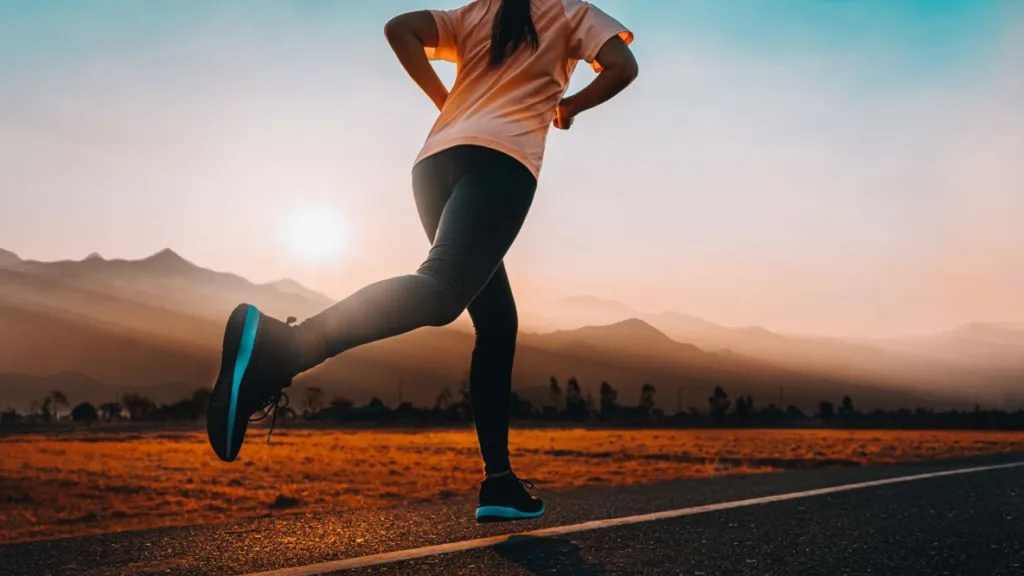Introduction
Wellness has become an incredibly important concept in recent years. More and more people are prioritizing taking care of their mental, physical, and emotional health. However, many wellness programs come with high price tags and inaccessible requirements, blocking many from participating. The awesome news is that free and accessible health resources are available if you know where to look. This post will highlight six different paths to finding no-cost wellness initiatives so that more people can access the resources already active in our communities.

There are a powerful number of community centers, nonprofits, virtual platforms, educational institutions and government programs focused on wellness across many domains like nutrition, fitness, mental health, relaxation, and more. Unfortunately, barriers like high membership fees, expensive equipment requirements and hidden costs often prevent access, especially for marginalized groups and lower income populations. However, with rising recognition of inequalities in the wellness sphere, the number of truly no-cost programs is increasing. We will highlight some of these successful initiatives so readers can take the first step towards prioritizing their whole-person wellness.
Barriers to Wellness and Need for Community Programs
Wellness programs aimed at overall health promotion, disease prevention and fitness maintenance have well-established benefits. However, traditional programs through private companies or gyms often come with barriers that block access for many. Cost is one major prohibiting factor for families and individuals struggling financially. Even programs that advertise as low-cost often require fees for registration, special equipment, meals, supplements and more that quickly add up. Accessibility is another common issue, with many wellness centers located far from public transit or in higher income areas. Some programs also lack accommodations or inclusivity for people with disabilities, older adults, or marginalized groups.
These barriers emphasize the growing need for truly no-cost and easily accessible community health programs to fill the gaps left by mainstream wellness centers that exclude people implicitly or explicitly. Especially given alarming data on growing chronic disease rates and declines in life expectancy, public health initiatives to promote wellness deserve amplification in communities across income brackets. No one’s ability to take care of their body and mind should depend on their socioeconomic status. Luckily, many impactful nonprofits, outreach programs, and advocacy groups recognize this reality and have taken steps to address it.

Exploring Local Community Resources
Many local community centers and nonprofit organizations offer wellness programming at no cost to improve accessibility. These programs do incredible work to empower people through knowledge and direct services related to nutrition, fitness, stress relief, mindfulness, self care and more. For example, a local church might host free fitness classes a few times a week for congregation members and neighbors. A community center nearby could have a community garden and canning kitchen for affordable nutritious food education. Wellness nonprofits like mental health alliances or recovery groups also often provide free programming like support groups, skill building workshops or mindfulness events to the public.
On top of nonprofit work, many local public health departments sponsor outreach centered on wellness and disease prevention for free. Government funding allows city or county health agencies to lead community health programs with reliability. For example, a health department could organize a walking club open to all, campaigns to promote nutrition guidelines, free screening events or accessible resources tailored to underserved groups.
Partnerships between health departments and community leaders cultivate diverse, multilingual and culturally-informed programs that successfully reach more people. Overall, investing time to explore both nonprofit and local health department offerings near you can uncover awesome no-cost resources to enhance holistic wellness through social engagement, education and skill building.
Online Platforms for Connecting to Wellness
In addition to community-based programs, a powerful range of no-cost wellness initiatives can be accessed virtually with an internet connection alone. Hundreds of free mobile apps allow users to benefit from wellness communities, educational resources, and guided services without ever having to leave home.
For example, apps like OpenFit or Simple Habit provide step-by-step home workout plans to suit any schedule or fitness level. Other apps like Recovery Tools or What’s Up offer reflective journals, mood tracking, relaxation exercises, and chat forums moderated by mental health professionals to support users in developing healthy coping skills. Many of these highly-rated apps offer premium features, but their basic wellness content proves helpful and engaging enough without any subscription.

Outside mobile apps, many reputable health websites like the CDC, Mayo Clinic, and American Heart Association provide extensive free guidance on wellness topics from nutrition to aging to fertility and more. For connection with other wellness seekers rather than content alone, social networking giants like Facebook facilitate huge online support communities focused on areas like workout tips, support for overcoming addictions, recipe shares for specialized diets, and discussion boards for chronic conditions. Overall, a simple Google search reveals the world of digital wellness resources open to anyone with Wifi and a desire for knowledge, accountability, or conversation around optimizing their holistic health.
DIY Approaches to Wellness
Perhaps after exploring some involved community initiatives or intricate app offerings, the idea of dedicating time to optimizing wellness still feels unattainable for some with packed schedules. Luckily, many simple yet impactful DIY approaches to holistic health can be woven into any lifestyle. Small adjustments like taking 30 minutes to follow a free home workout video on YouTube 3 times a week or using a free meal planning app like Mealime to organize affordable healthy ingredient lists can produce powerful changes over time. Beyond adopting guided resources where available, journaling, reflecting, stretching during Netflix binges, choosing water over soft drinks, or taking 5 minutes to meditate with help from free podcasts also require little effort while slowly transforming health trajectories.
For those feeling too busy, overwhelmed, or unmotivated to formally participate in wellness programs, starting small is key. Websites like Well and Good as well as clean-eating blogs like Cookie and Kate feature free healthy affordable recipes perfect for busy people wanting to incorporate more plants and nutrition boosters into their diet without added costs or hassles. Gradual sustainable adjustments tailored to individual circumstances work better for long term change than restrictive demands from expensive fad programs promising fast results. Remembering that progress towards wellness looks different for everyone helps make small positive choices feel empowering.
Educational Institutions and Research
An often overlooked path to accessible wellness programming comes through local educational institutions. Many universities and even some high schools participate in research on wellness and sponsor free clinics or services open to the general public. Especially in fields like nursing, counseling, nutrition, fitness, and behavioral medicine, students gain practical experience providing low or no-cost programming under expert supervision from academics as part of their training.
For example, a local college’s nursing department could facilitate free biometric screenings and health education seminars monthly. A high school club focused on holistic wellness may host low-cost mindful events like outdoor guided meditation sessions for their community. Meanwhile, universities in all fields frequently conduct research projects investigating topics related to nutrition, aging, mental health, addiction, or exercise – allowing community members a chance to benefit from cutting edge research interventions in structured programs approved by institutional ethics boards without any cost.
Accessing programming for no cost while benefiting students and researchers continues the cycle of awareness and growth around wellness resources for all. Finding these opportunities does require some research and comfort navigating university hospital programs or events calendars. However, utilizing educational institutions represents a potentially invaluable way for anyone regardless of age or background to enhance their knowledge, skills, access to care, and connections within the evolving wellness landscape.

Knowledge for Empowerment
While highlighting access points matters significantly, the journey to holistic wellness fundamentally relies on knowledge gained through reliable resources. Without understanding wellness scientifically, maintaining lifestyle changes or identifying misinformation that undermines health becomes challenging. Thus beyond physical programs, prioritizing free learning opportunities forms a crucial path as well.
Many governmental organizations like the CDC and institutions like the Mayo Clinic dispense myth-busting guidance on everything from toxins in beauty products to metals in nutritional supplements to disease management techniques informed by doctors and scientists. Even social media groups created by experts help counter wellness claims promoted by celebrities or influencers lacking credentials. Once equipped with empowering knowledge, individuals gain autonomy in building customized wellness journeys rather than following unreliable or exclusionary systems.
Experimenting with small adjustments, noticing cause and effect, identifying motivations and barriers, reflecting on progress, and circumstances affecting access to resources all allow people to become authorities on their own health. No two individuals share the exact same wellness goals or lifestyles, so universal expensive protocols pushed by corporate wellness centers tend to prove ineffective long term compared to personalized choices. Seeking knowledge through science-backed resources allows people to incrementally shape lasting change rather relying fully on external structures. While community programs offer invaluable support, emphasizing education facilitates independence, self-efficacy and sustainability while unlocking the door to overall vitality through informed decisions.
Conclusion
The awesome options for engaging in no-cost wellness initiatives seem endless when you decide to start actively looking for them. Despite financial limitations, lack of extra time, past difficulties finding accessible traditional resources, or current health challenges, viable paths to knowledge, skills, support and programming for greater holistic wellness exist through community channels.
As outlined above, anyone can discover amazing health transformation opportunities with some research into local nonprofits, nearby community health services like free workout classes at a rec center, virtual wellness communities thriving across social media and specialized apps, small but seismic lifestyle shifts sparked by reputable DIY resources, and local universities investing in prevention research providing cared for by students investing in making wellness for all a reality.
No single path serves as a blanket solution given diverse circumstances across populations. However, recognizing barriers then exploring the six channels highlighted above allows more people to access wellness regardless of socioeconomic status. Optimizing holistic health relies on physical community connections, virtual spaces facilitating knowledge sharing, educational research progress, empowering lifestyle adjustments, and government or nonprofit initiatives serving vulnerable groups.
Combing these strategies promotes radical accessibility. When communities embrace wellness holistically by making science-backed programming open to all populations, health equity becomes possible and the likelihood of sustainable widespread impact accelerates exponentially. Prioritizing inclusion allows people passionate about wellness in all capacities to unite behind values of empowerment, empathy and justice.
Join Us!
We warmly invite all readers to continue this wellness access conversation by subscribing to our newsletter, website and social media pages for more weight loss, fitness, health and proper diet and nutrition.
Thank you for reading this post, don't forget to subscribe to our free newsletter
!

